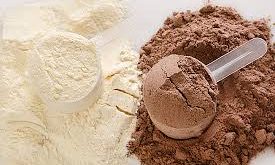Kumar Ranjan, CEO & Founder, eFeed
The impact of animal-source foods on nutritional status of pregnant women has long been a debatable subject. We are fast progressing into a world full of packaged food products, the swelling demand for animal-source foods is met with an array of branded and non-branded products available on the supermarket shelves in a variety of price range.
It is believed if regularly consumed for a prolonged period, animal source foods— like milk and meats can reduce the micro-nutrient deficiency like lack of iron, folate and vitamins. Especially for women in the reproductive age or pregnant women, animal-source foods can be a boon.
But, in the present time, what’s really worrisome is the authenticity of all the products available in the market for consumption. Even though most products suffice the FSSAI (Food Safety and Standards Authority of India) guidelines, there is no corroboration of the source—the animals and their diet.
The food these animals consume lay a direct impact on the quality of the end-product. Several studies in the past have highlighted that there exists a widespread practice of adding antibiotics, subtherapeutic doses and enzymes to animal feed with an aim to enhance productivity. Often, antibiotics intended for treatment are used as growth-promoters to augment the produce. The practice is so harmful that it’s completely banned in Europe but a lot of countries including India are still reeling under the adversity caused due to consumption of adulterated animal-source foods.
Often, livestock are fed low-quality agro-industrial by-products because that are cheaper. However, ‘lesser the price, poorer the quality’—this sub-quality feed and fodder consumed by animals contains residues of pesticides used on the crops that straightaway transfers to the animal by-products, especially meats and eggs, further paving way into our plates.
Similar is the risk with milk. In India, milk is the most adulterated product and at the same time it’s the most consumed and advised food item during pregnancy leading to a variety of health issues to both mother and child. A study conducted by FSSAI across 33 Indian states found that milk had traces of detergent, chalk, caustic soda and even urea. While most of the adulterants are added at the time of processing and packaging, there is also a high risk of these toxic materials getting transferred from the animals to the consumers. For example, if the moisture level in the feed goes beyond 11% the feed gets a fungal infection. Subsequently, the fungus gets converted into carcinogen (Aflatoxin) in the cattle and is transferred to milk. As per FSSAI, Aflatoxin M1 in milk is a cancer-causing substance. In 2019, FSSAI’s National Milk Safety and Quality Survey made a shocking revelation that 14% of the milk samples collected from Tamil Naidu had Aflatoxin M1 level and did not comply with permissible limit because the fodder gathered excess moisture during rainy season.
Another commonly found bacteria in milk is Listeria. Once transferred to the diet of pregnant women, listeria can cause miscarriage, severe illness and even death of the new-born baby.
Not just pregnant women, substandard animal-source foods can lead to serious ailments in perfectly healthy individuals. It can be especially dangerous or can even prove fatal for people with weakened immune systems. If consumed for a long time, the toxins and bacteria present in the food can even lead to cancer or severe stomach/digestive ailments.
The impact of sub-quality animal-source foods on human health is conspicuous and one of the most viable solutions of addressing this ever-important issue is focussing on nutritional diet for animals. A balanced diet for farm animals can benefit human health up to a great extent because if something artificial or of poor quality is fed to animals it is eventually travelling up the food chain therefore, it’s crucial to be concerned about the nutrition of the animals in order to maintain the ecological balance and sanctity of the food chain.
The best way to provide a balanced diet to farm animals is by educating the livestock farmers and teaching them how they can produce a well-balanced diet using the local ingredients. Along with having better quality, localised feed can be cost-effective and improve the condition of farmers in terms of better livelihood and quality of business.
 Newspatrolling.com News cum Content Syndication Portal Online
Newspatrolling.com News cum Content Syndication Portal Online





